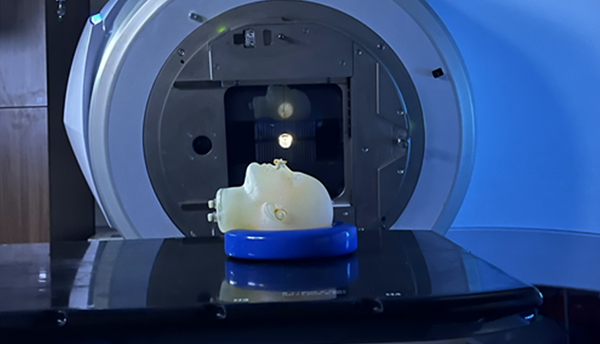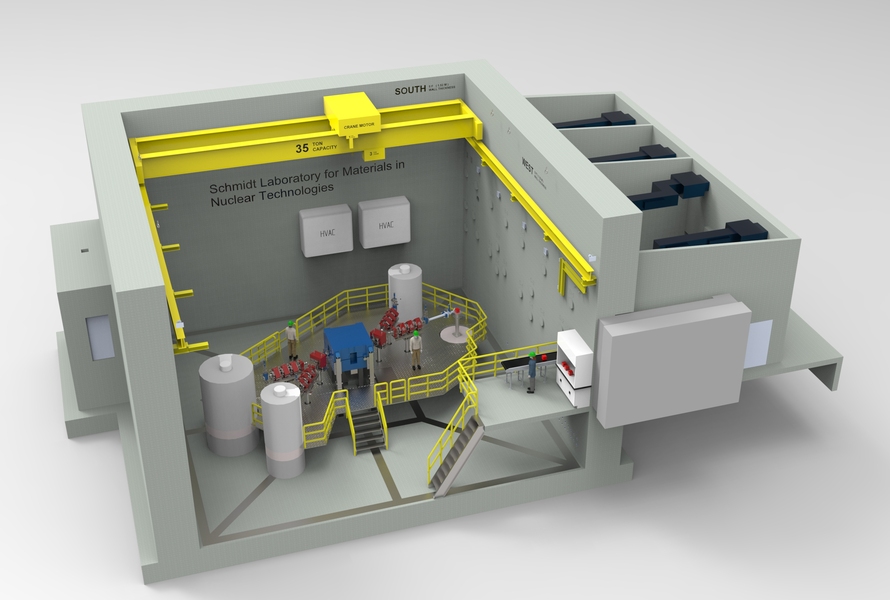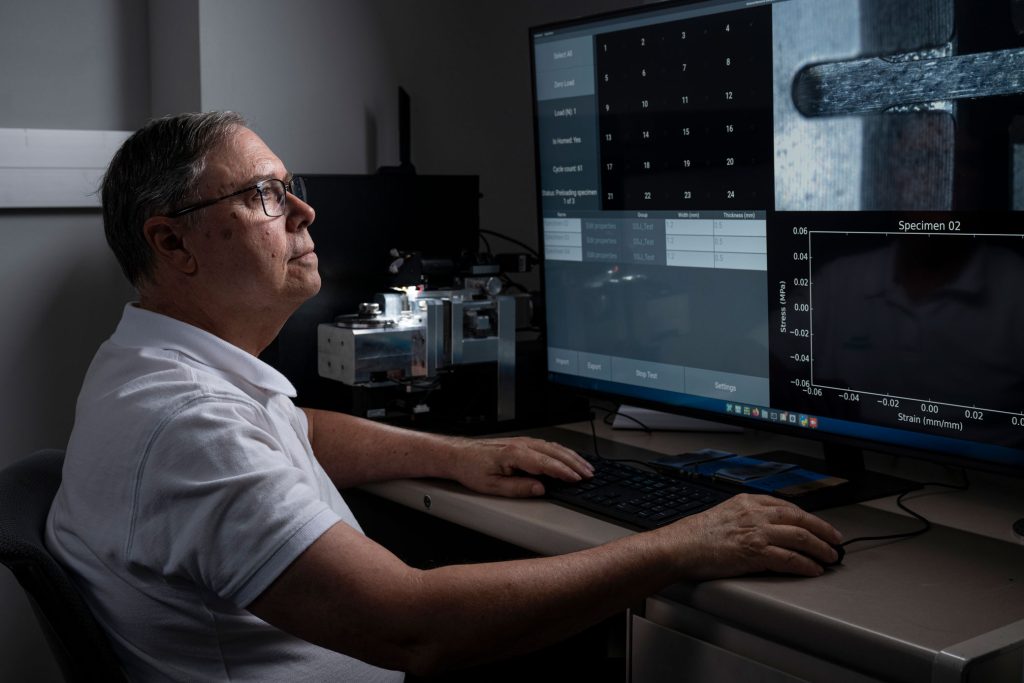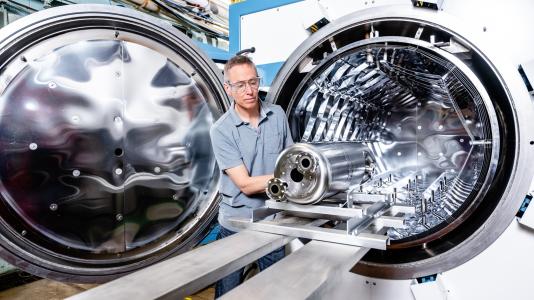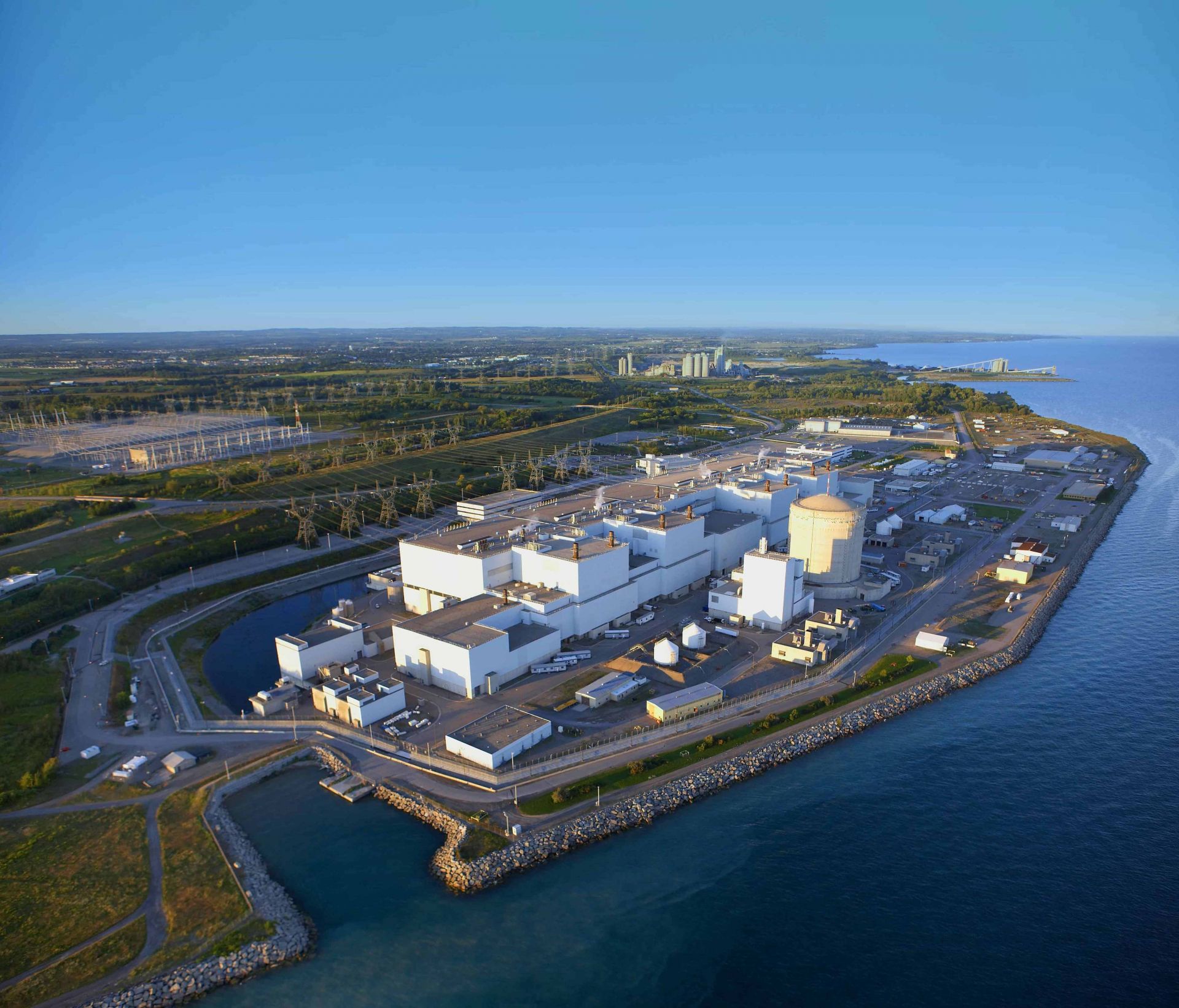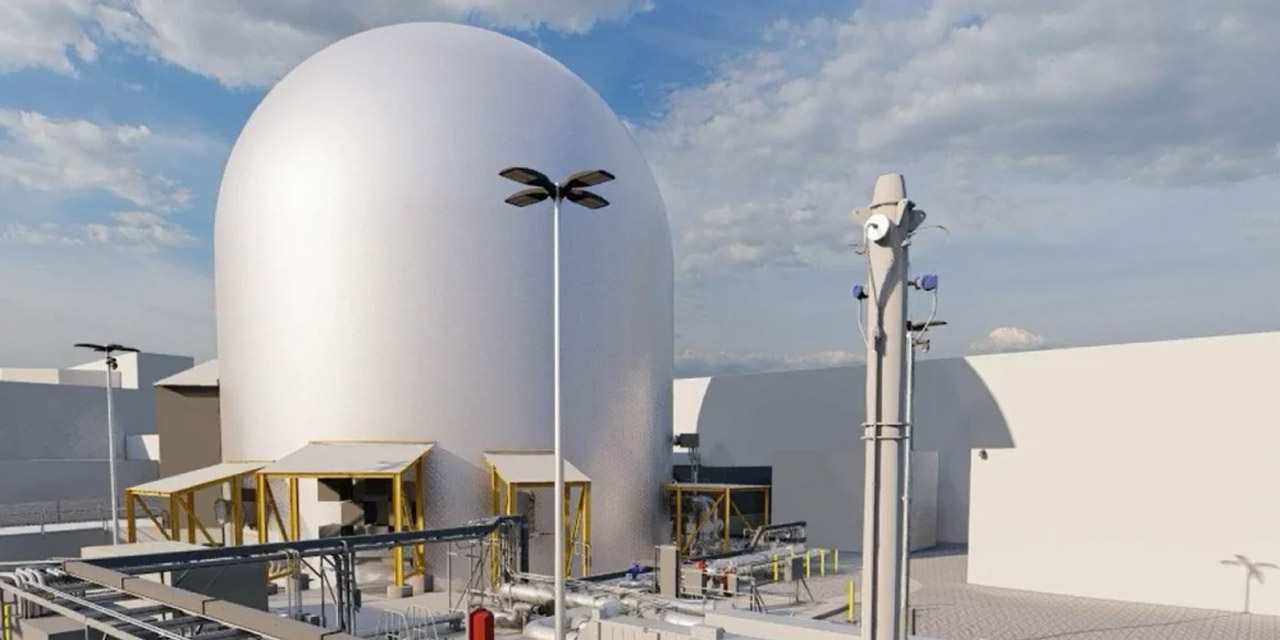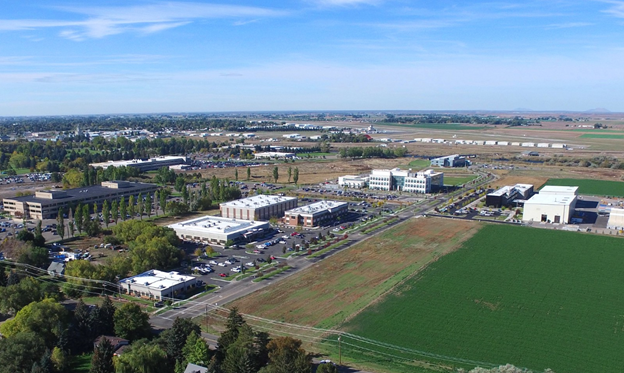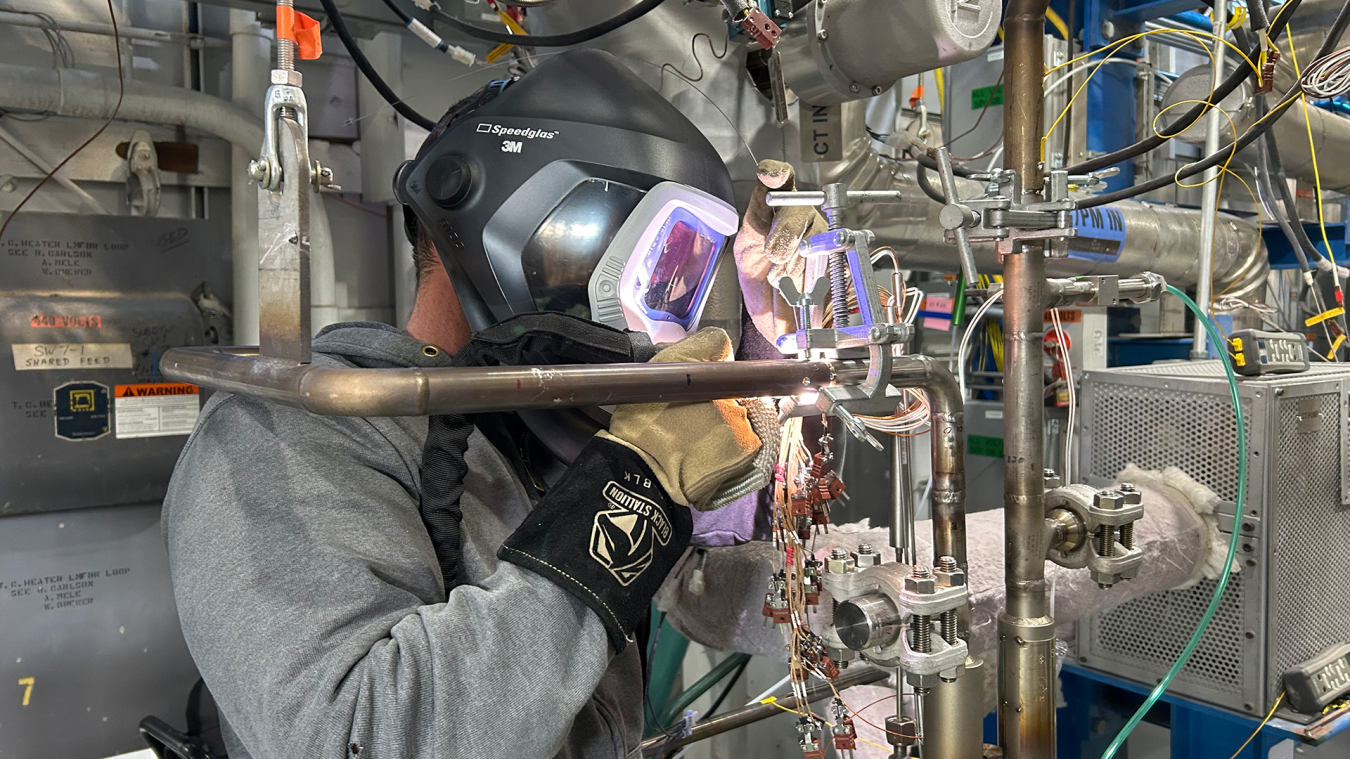A representation of the NRIC DOME microreactor test bed. (Image: NRIC)
A NIST head-shaped phantom is helping researchers improve radiation dose estimates for cancer treatment. (Photo: NIST)
In an article just published by the Taking Measure blog of the National Institute of Standards and Technology, Stephen Russek—who leads the Imaging Physics Project in the Magnetic Imaging Group at NIST and codirects the MRI Biomarker Measurement Service—describes his team’s work using phantom stand-ins for human tissue.
IAEA director general Rafael Grossi speaks during a session on combating marine pollution. (Photo: E. McDonald/IAEA)
Plastic waste is polluting the oceans and entering the human body in the form of microplastics. According to the United Nations, without immediate action the amount of plastic finding a way into the oceans each year could reach 37 million metric tons by 2040, becoming a threat to marine and human life.
In this artist’s concept, a notional spacecraft with a high-power plasma thruster is powered by kilowatt-level radiovoltaics. (Image: DARPA/Alan Clarke)
You could call it a power contest. Teams picked for a new research program from the Defense Advanced Research Projects Agency (DARPA) will compete to design radiovoltaic cells that can outperform others in measured power density and endure high-flux radiation from a U.S. Army Research Lab linear accelerator. The top teams will strive to make it through a second downselect based on the performance of cells sequestered in time capsules and subjected to even more punishing high-flux radiation. Concepts that make it to the bonus period have a chance to be built into radioisotope-fueled power systems uniquely suited to high-radiation regions of space or dark, remote places on Earth.
Housed at MIT’s Plasma Science and Fusion Center, the Schmidt Laboratory for Materials in Nuclear Technologies will use a compact cyclotron to accelerate the testing of materials for use in commercial fusion power plants. (Image: Rick Leccacorvi and Rui Vieira/PSFC)
The Massachusetts Institute of Technology’s Plasma Science and Fusion Center (PSFC) has launched the Schmidt Laboratory for Materials in Nuclear Technologies (LMNT). Backed by a philanthropic consortium led by Eric and Wendy Schmidt, LMNT is designed to speed up the discovery and evaluation of cost-effective materials that can withstand extreme fusion conditions for extended periods.
Professor Joseph Newkirk operates a testing device in Missouri S&T’s Toomey Hall. (Photo: Blaine Falkena/Missouri S&T)
Argonne physicist Michael Kelly loads a superconducting cavity into a large furnace. (Photo: ANL)
Argonne National Laboratory said it has secured just over $10 million from the Department of Energy’s Advanced Research Projects Agency–Energy (ARPA-E) for two research projects investigating the transmutation of spent nuclear fuel into less radioactive substances.
Darlington nuclear power plant in Clarington, Ontario. (Photo: OPG)
The Canadian Nuclear Safety Commission has amended Ontario Power Generation’s power reactor operating license for Darlington nuclear power plant to authorize the production of the medical radioisotopes lutetium-177 and yttrium-90.
A view of the DOME microreactor testbed, which is managed by the National Reactor Innovation Center. (Image: NRIC)
The National Reactor Innovation Center is accepting applications from developers ready to take a fueled microreactor to criticality inside the former Experimental Breeder Reactor-II containment building at Idaho National Laboratory, now repurposed as DOME—a microreactor test bed. According to a Department of Energy announcement, DOME will be ready to receive the first experimental reactor in the fall of 2026, with testing likely to begin in 2027.
Drilling begins. (Photo: Kairos Power)
Kairos Power announced this morning that safety-related nuclear construction has begun at the Oak Ridge, Tenn., site where the company is building its Hermes low-power test reactor. Hermes, a scaled demonstration of Kairos Power’s fluoride salt–cooled, high-temperature reactor technology, became the first non–light water reactor to receive a construction permit from the Nuclear Regulatory Commission in December 2023. The company broke ground at the site in July 2024.
Artist’s impression of NASA’s Dragonfly approaching a landing site on Saturn’s moon Titan. Essentially a flying chemistry lab, along with cameras and other science instrumentation, Dragonfly will travel between dozens of landing sites on Titan’s surface to investigate the chemical origins of life. (Image: NASA/Johns Hopkins APL/Steve Gribben)
Curiosity landed on Mars sporting a radioisotope thermoelectric generator (RTG) in 2012, and a second NASA rover, Perseverance, landed in 2021. Both are still rolling across the red planet in the name of science. Another exploratory craft with a similar plutonium-238–fueled RTG but a very different mission—to fly between multiple test sites on Titan, Saturn’s largest moon—recently got one step closer to deployment.
On April 25, NASA and the Johns Hopkins University Applied Physics Laboratory (APL) announced that the Dragonfly mission to Saturn’s icy moon passed its critical design review. “Passing this mission milestone means that Dragonfly’s mission design, fabrication, integration, and test plans are all approved, and the mission can now turn its attention to the construction of the spacecraft itself,” according to NASA.
Idaho National Laboratory’s Idaho Falls campus. (Photo: INL)
Idaho National Laboratory is looking for a sponsor to invest $5 million–$10 million in a privately funded innovation incubator to support seed-stage start-ups working in nuclear energy, integrated energy systems, cybersecurity, or advanced materials. For their investment, the sponsor gets access to what INL calls “a turnkey source of cutting-edge American innovation.” Not only are technologies supported by the program “substantially de-risked” by going through technical review and development at a national laboratory, but the arrangement “adds credibility, goodwill, and visibility to the private sector sponsor’s investments,” according to INL.
Plastic pollution from overseas washes up on San Cristobal Island, part of the Galapagos Islands archipelago, in 2019. (Photo: F. Oberhaensli/IAEA)
The International Atomic Energy Agency announced that its Nuclear Technology for Controlling Plastic Pollution (NUTEC Plastics) initiative has partnered with Ecuador’s Oceanographic Institute of the Navy (INOCAR) and Polytechnic School of the Coast (ESPOL) to build microplastic monitoring and analytical capacity to address the growing threat of marine microplastic pollution in the Galapagos Islands.
Work on Argonne's METL sodium test loop. (Photo: Argonne National Laboratory)
Argonne National Laboratory has successfully swapped out an aging cold trap in the sodium test loop called METL (Mechanisms Engineering Test Loop), the Department of Energy announced April 23. The upgrade is the first of its kind in the United States in more than 30 years, according to the DOE, and will help test components and operations for the sodium-cooled fast reactors being developed now.





